Study on Dynamic Characteristics and Key Gear Parameter Selection of the Cutting Gear Transmission System of Bauxite Mining Machine Under Overload Conditions
Abstract
1. Introduction
2. Establishment of the Cutting Transmission System Model for Bauxite Mining Equipment
2.1. Dynamic Model of the Cutting Transmission System
2.2. Model of the Cutting Transmission System
3. Results and Discussion
3.1. Influence of Pressure Angle on Gear Meshing Characteristics and Fatigue Life
3.2. Influence of Face Width on Gear Meshing Characteristics and Fatigue Life
3.3. Influence of Bottom Clearance Coefficient on Gear Meshing Characteristics and Fatigue Life
3.4. Influence of Gear Geometric Parameters on Vibration and Noise in the Cutting Transmission System
3.4.1. Influence of Pressure Angle on Vibration and Noise in the Gear Transmission System
3.4.2. Influence of Face Width on Vibration and Noise in the Gear Transmission System
3.4.3. Influence of Bottom Clearance Coefficient on Vibration and Noise in the Gear Transmission System
4. Test Validation
4.1. Test Equipment
4.2. Validation Results and Analysis
4.3. Limitations
- The research method relied primarily on simulation analysis. Due to constraints in experimental cost and availability, optimal gear parameters were determined via MASTA simulations. The loading conditions applied in the simulations may not fully represent real-world operational scenarios, and factors such as temperature and gear manufacturing errors were not incorporated into the modeling process.
- Experimental validation was limited by testing capabilities. Only vibration and noise measurements were conducted on the improved gears. Comprehensive fatigue life testing under full-range operating conditions was not carried out, and the long-term reliability of the system under sustained overload conditions remains unverified.
- The scope of parameter selection was constrained. This study focused exclusively on three macro-geometric parameters: pressure angle, face width, and bottom clearance coefficient. It did not account for micro-level design factors—such as gear modifications and material heat treatment processes—or their potential synergistic effects on overall system performance.
5. Conclusions
- Increasing the pressure angle significantly enhances gear meshing performance, resulting in reduced tooth contact stress, misalignment, and peak-to-peak transmission error (PPTE) across all operating conditions, along with an improvement in gear fatigue life. Similarly, increasing the face width reduces contact stress and transmission error, thereby extending service life, although it has a negligible influence on misalignment. An optimal bottom clearance coefficient of 0.4 was identified, which effectively lowers contact stress, misalignment, and PPTE under both rated and 110% load conditions, thus improving meshing quality and fatigue life.
- Adjusting gear geometric parameters enables effective control over vibration and noise during meshing. Pressure angles of 22° and 23° yield significant reductions in vibration acceleration and sound pressure level. Face widths of 73 mm and 75 mm demonstrate superior performance in minimizing acceleration amplitude, while 70 mm, 74 mm, and 75 mm exhibit distinct advantages in sound pressure level reduction under different operating conditions. While increasing the bottom clearance coefficient generally elevates noise levels, at 0.4, the noise remains within acceptable limits, concurrently ensuring transmission smoothness and system reliability.
- Loading tests performed on the selected parameter set—comprising a 23° pressure angle, 75 mm face width, and 0.4 bottom clearance coefficient—confirmed that this configuration effectively suppresses vibration and noise in the cutting transmission system. These experimental results validate the feasibility and effectiveness of enhancing dynamic performance by selecting key gear geometric parameters.
Author Contributions
Funding
Data Availability Statement
Conflicts of Interest
Abbreviations
| TE | Transmission Error |
| PPTE | Peak-to-Peak Transmission Error |
| ISO | International Organization for Standardization |
| HCR | High-Contact Ratio |
References
- Wang, Y.; Liu, P.; Dou, D. Investigation of Load Capacity of High-Contact-Ratio Internal Spur Gear Drive with Arc Path of Contact. Appl. Sci. 2022, 12, 3345. [Google Scholar] [CrossRef]
- Namboothiri, N.V.; Marimuthu, P. Fracture Characteristics of Asymmetric High Contact Ratio Spur Gear Based on Strain Energy Release Rate. Eng. Fail. Anal. 2022, 134, 106038. [Google Scholar] [CrossRef]
- Wang, H.; Yan, C.; Zhou, C.; Hu, B.; Dong, J.; Yin, L. A Loaded Tooth Contact Analysis (LTCA) Model of Profile Modified Gears. Meccanica 2025, 60, 17–37. [Google Scholar] [CrossRef]
- Nevzat Özgüven, H.; Houser, D.R. Mathematical Models Used in Gear Dynamics—A Review. J. Sound Vib. 1988, 121, 383–411. [Google Scholar] [CrossRef]
- Dong, C.; Pei, W.; Liu, Y.; Wei, Y.; Li, D.; Guo, R.; Ren, Z. Experimental Research on Transmission Characteristics of Elliptic Gear Transmission Systems. Stroj. Vestn.-J. Mech. Eng. 2022, 68, 702–712. [Google Scholar] [CrossRef]
- Benatar, M.; Handschuh, M.; Kahraman, A.; Talbot, D. Static and Dynamic Transmission Error Measurements of Helical Gear Pairs With Various Tooth Modifications. J. Mech. Des. 2019, 141, 103301. [Google Scholar] [CrossRef]
- Autiero, M.; Paoli, G.; Cirelli, M.; Valentini, P.P. The Effect of Different Profile Modifications on the Static and Dynamic Transmission Error of Spur Gears. Mech. Mach. Theory 2024, 201, 105752. [Google Scholar] [CrossRef]
- Sánchez, M.B.; Pleguezuelos, M.; Pedrero, J.I. Influence of Profile Modification on the Transmission Error of Spur Gears under Surface Wear. Mech. Mach. Theory 2024, 191, 105473. [Google Scholar] [CrossRef]
- Kim, S.; Moon, S.; Sohn, J.; Park, Y.; Choi, C.; Lee, G. Macro Geometry Optimization of a Helical Gear Pair for Mass, Efficiency, and Transmission Error. Mech. Mach. Theory 2020, 144, 103634. [Google Scholar] [CrossRef]
- Litvin, F.L.; Gonzalez-Perez, I.; Fuentes, A.; Hayasaka, K.; Yukishima, K. Topology of Modified Surfaces of Involute Helical Gears with Line Contact Developed for Improvement of Bearing Contact, Reduction of Transmission Errors, and Stress Analysis. Math. Comput. Model. 2005, 42, 1063–1078. [Google Scholar] [CrossRef]
- Zhou, D.; Guo, Y.; Yang, J.; Zhang, Y. Study on the Parameter Influences of Gear Tooth Profile Modification and Transmission Error Analysis. Machines 2024, 12, 316. [Google Scholar] [CrossRef]
- Bozca, M. Transmission Error Model-Based Optimisation of the Geometric Design Parameters of an Automotive Transmission Gearbox to Reduce Gear-Rattle Noise. Appl. Acoust. 2018, 130, 247–259. [Google Scholar] [CrossRef]
- İrsel, G. Effects of Modification on the Strength–Weight Ratio of Standard Bevel Gears. Mech. Based Des. Struct. Mach. 2022, 50, 1456–1480. [Google Scholar] [CrossRef]
- Yang, J.; Chen, Z.; Shi, W.; Yuan, R.; Liu, J.; Zhao, Y. Vibration Control of Commercial Vehicle Drive Axles Based on Modification of Helical Gears. Mech. Syst. Signal Process. 2023, 193, 110252. [Google Scholar] [CrossRef]
- Cianciotta, L.; Cirelli, M.; Valentini, P.P. Multi-Objective Optimization of Gear Design of E-Axles to Improve Noise Emission and Load Distribution. Machines 2025, 13, 330. [Google Scholar] [CrossRef]
- Guilbault, R.; Gosselin, C.; Cloutier, L. Express Model for Load Sharing and Stress Analysis in Helical Gears. J. Mech. Des. 2004, 127, 1161–1172. [Google Scholar] [CrossRef]
- Nagamura, K.; Terauchi, Y.; Martowibowo, S.Y. Study on Gear Bending Fatigue Strength Design Based on Reliability Engineering: Prediction of Crack Propagation and Fatigue Life of MAC14 Supercarburized Steel Gear. JSME Int. J. Ser. C Dyn. Control Robot. Des. Manuf. 1994, 37, 795–803. [Google Scholar] [CrossRef]
- Nejad, A.R.; Gao, Z.; Moan, T. On Long-Term Fatigue Damage and Reliability Analysis of Gears under Wind Loads in Offshore Wind Turbine Drivetrains. Int. J. Fatigue 2014, 61, 116–128. [Google Scholar] [CrossRef]
- Lee, K.; Oh, J.; Song, M. Enhanced Fatigue SN Curve Generation for Gear Bending Fatigue Life Prediction Using Multi-Objective Optimization Algorithms. Eng. Fail. Anal. 2025, 167, 108960. [Google Scholar] [CrossRef]
- Li, Y.-H.; Zhang, C.; Yin, H.; Cao, Y.; Bai, X. Modification Optimization-Based Fatigue Life Analysis and Improvement of EMU Gear. Int. J. Struct. Integr. 2021, 12, 760–772. [Google Scholar] [CrossRef]
- Rajesh, S.; Marimuthu, P.; Dinesh Babu, P.; Venkatraman, R. Contact Fatigue Life Estimation for Asymmetric Helical Gear Drives. Int. J. Fatigue 2022, 164, 107155. [Google Scholar] [CrossRef]
- Wang, C. A Study into the Impact of Tooth Root Transition Curve Morphology on the Bending Fatigue Life of Gears. Int. J. Fatigue 2025, 190, 108643. [Google Scholar] [CrossRef]
- Anuradha, G.; Sagi, R.P.; Shakya, P.; Sekhar, A.S. Influence of Geometric Parameters on the Dynamic Performance of Spiral Bevel Gear. J. Vib. Eng. Technol. 2024, 12, 9097–9111. [Google Scholar] [CrossRef]
- Hao, L.; Li, W.; Zhang, X. Impact of Gear Modification on Gear Dynamic Characteristics. J. Fail. Anal. Prev. 2023, 23, 853–864. [Google Scholar] [CrossRef]
- Chu, X.; Chen, F. Geometric Design and Basic Feature Analysis of Double Helical Face Gears. Machines 2025, 13, 912. [Google Scholar] [CrossRef]
- Hu, Z.; Tang, J.; Zhong, J.; Chen, S.; Yan, H. Effects of Tooth Profile Modification on Dynamic Responses of a High Speed Gear-Rotor-Bearing System. Mech. Syst. Signal Process. 2016, 76–77, 294–318. [Google Scholar] [CrossRef]
- Rao, S.S.; Das, G. Reliability Based Optimum Design of Gear Trains. J. Mech. Transm. Autom. Des. 1984, 106, 17–22. [Google Scholar] [CrossRef]
- Al-Shareedah, E.M.; Alawi, H. Reliability Analysis of Bevel Gears with and without Back Support. Mech. Mach. Theory 1987, 22, 13–20. [Google Scholar] [CrossRef]
- Fonseca, D.J.; Shishoo, S.; Lim, T.C.; Chen, D.S. A Genetic Algorithm Approach to Minimize Transmission Error of Automotive Spur Gear Sets. Appl. Artif. Intell. 2005, 19, 153–179. [Google Scholar] [CrossRef]
- ISO6336; Calculation of Load Capacity of Spur and Helical Gears. The International Organization for Standardization: Geneva, Switzerland, 2019.


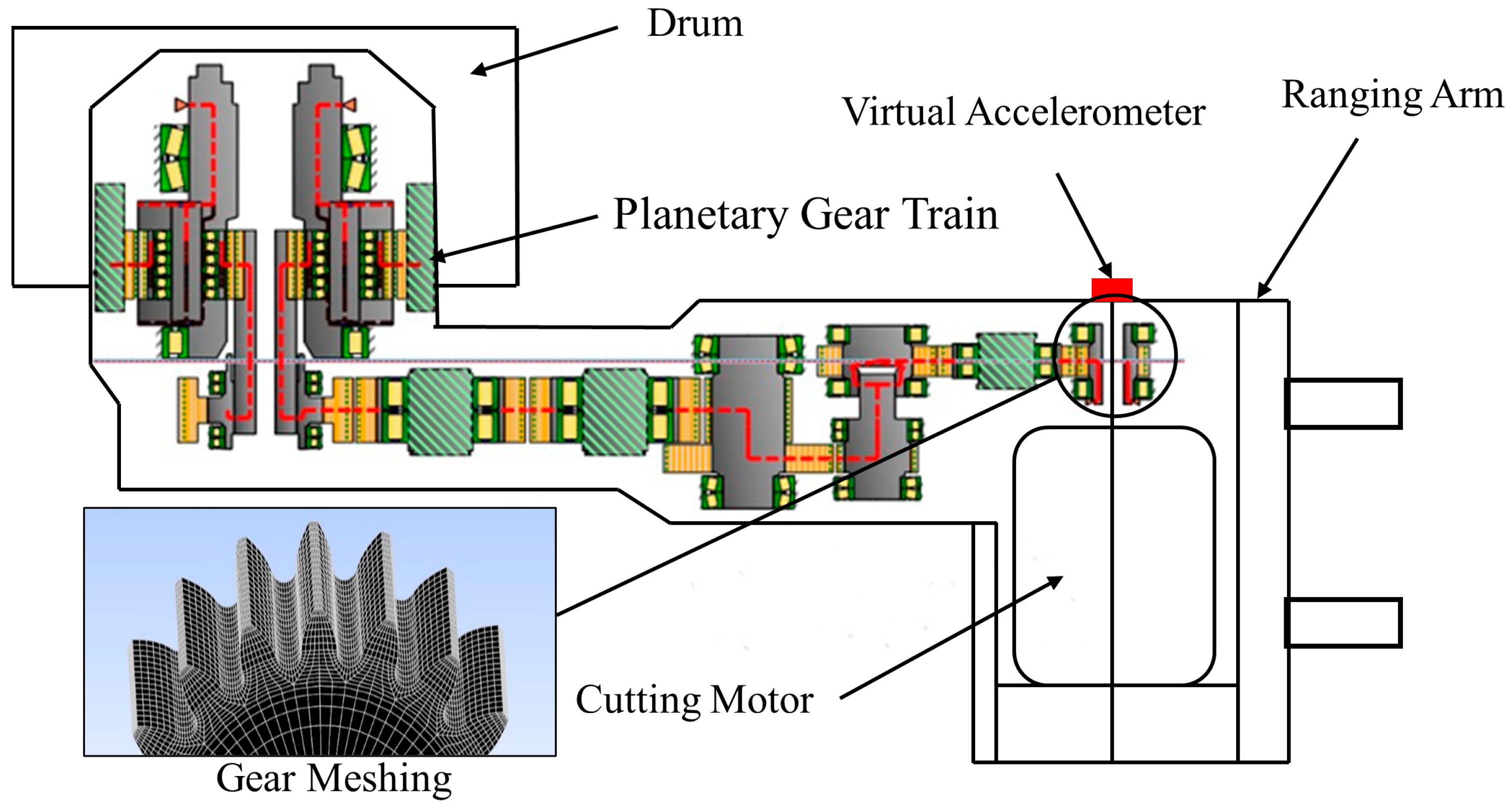


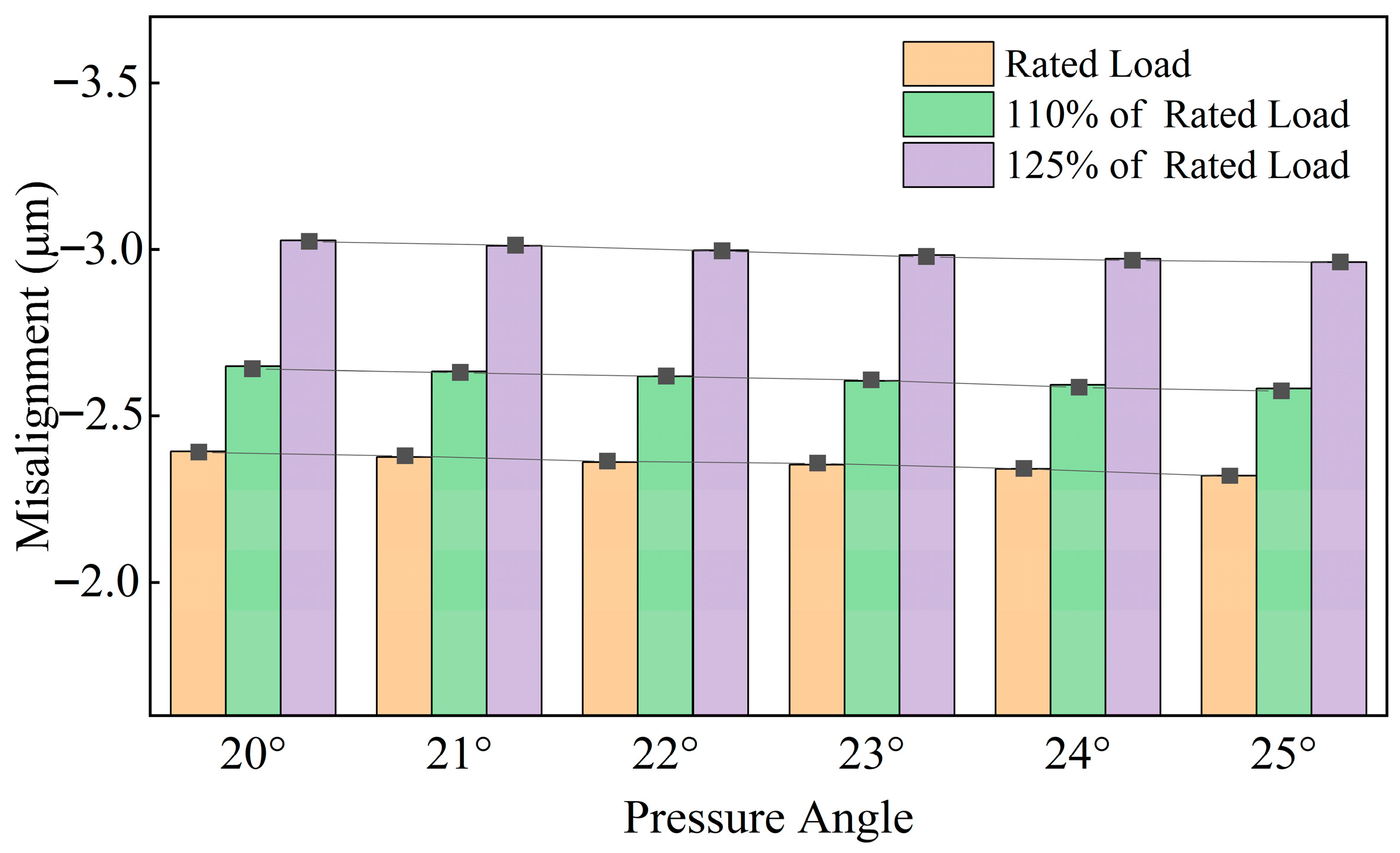

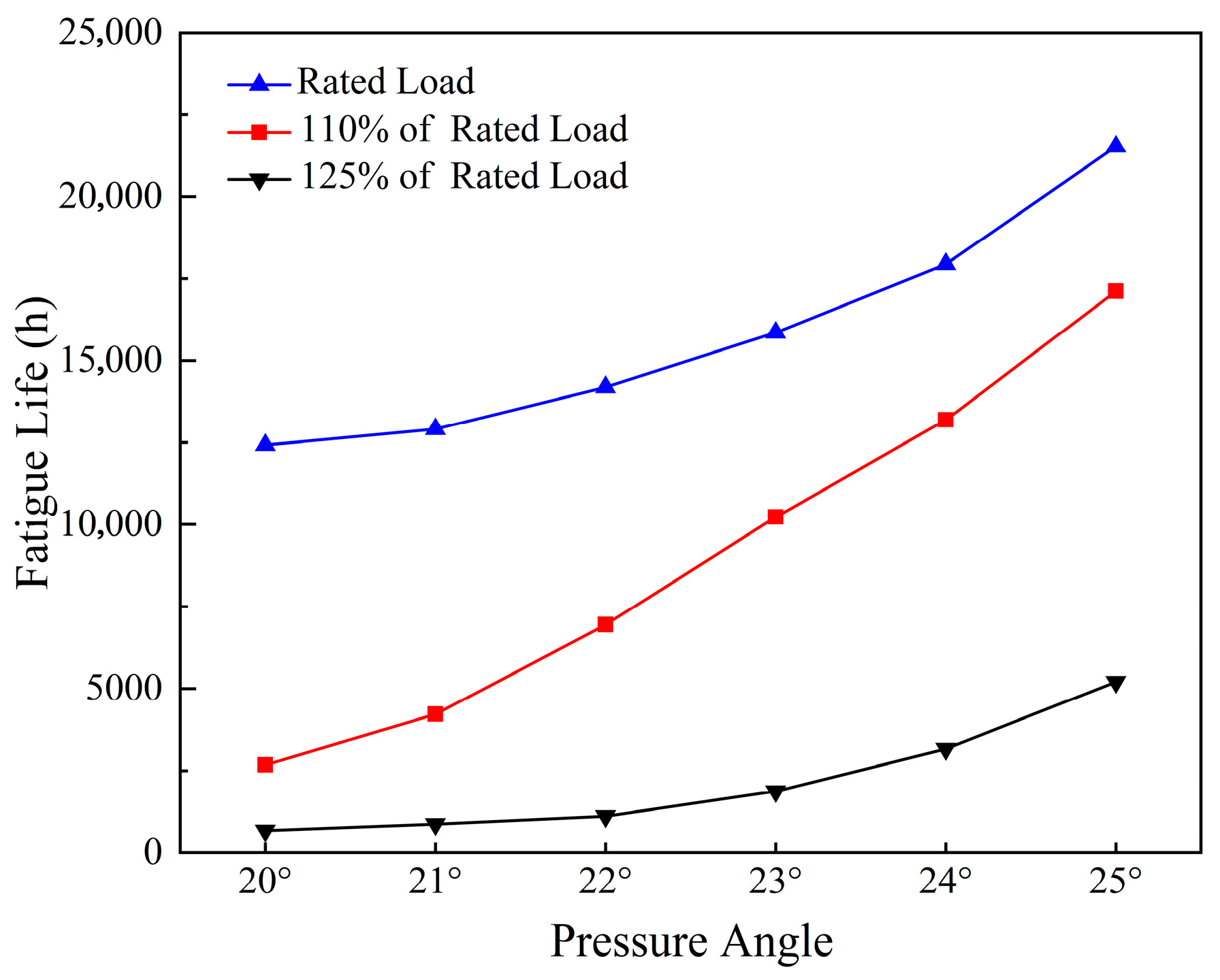



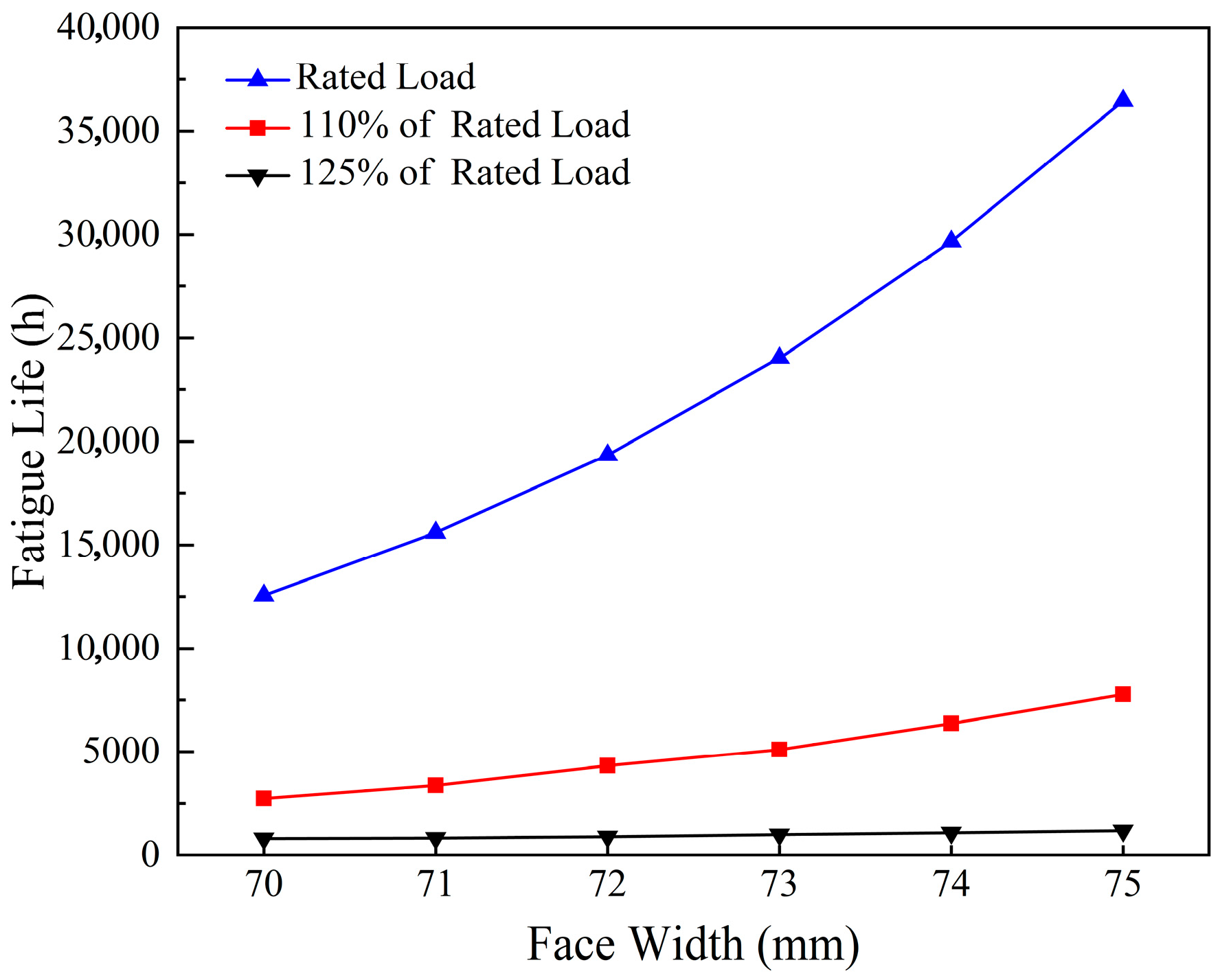
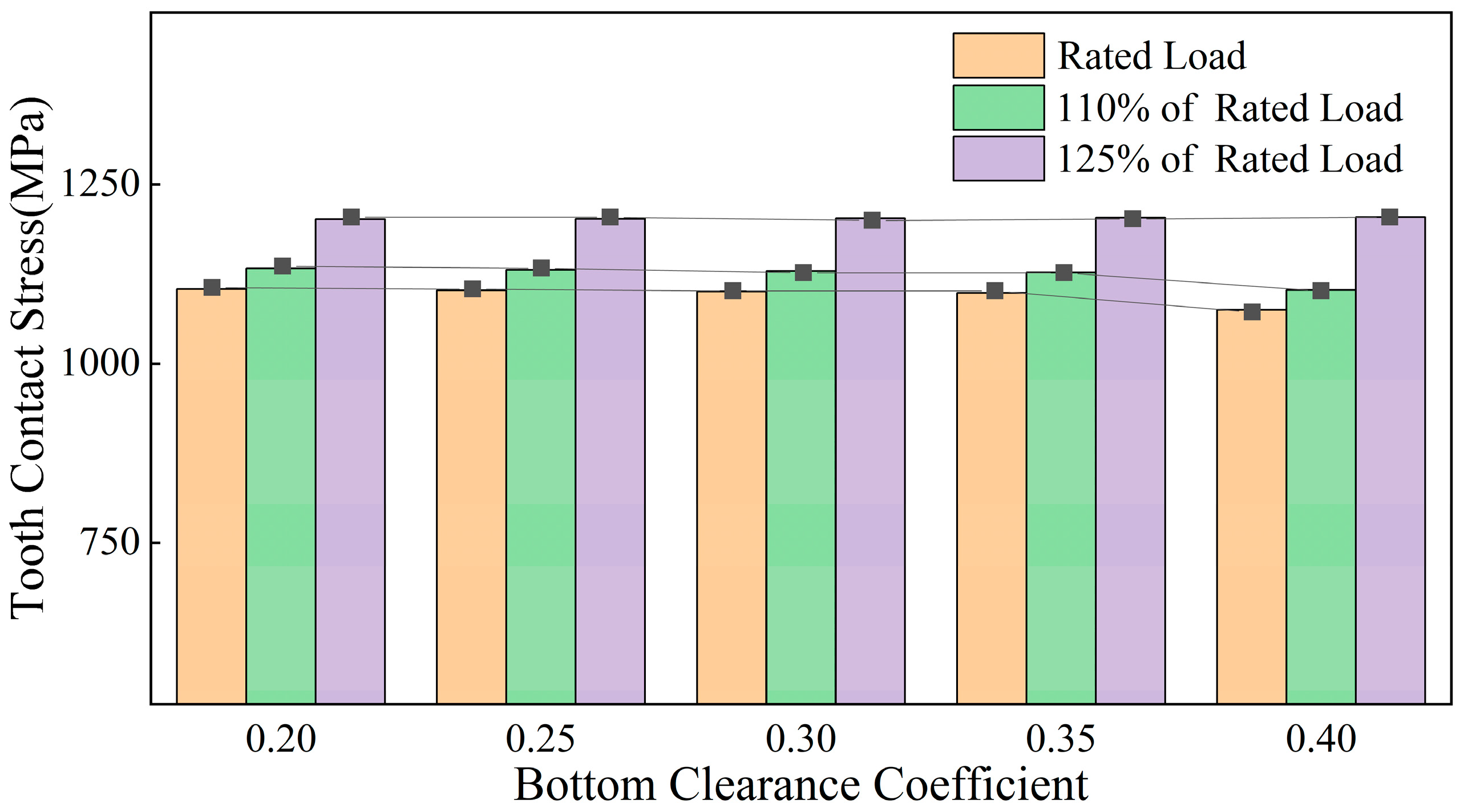
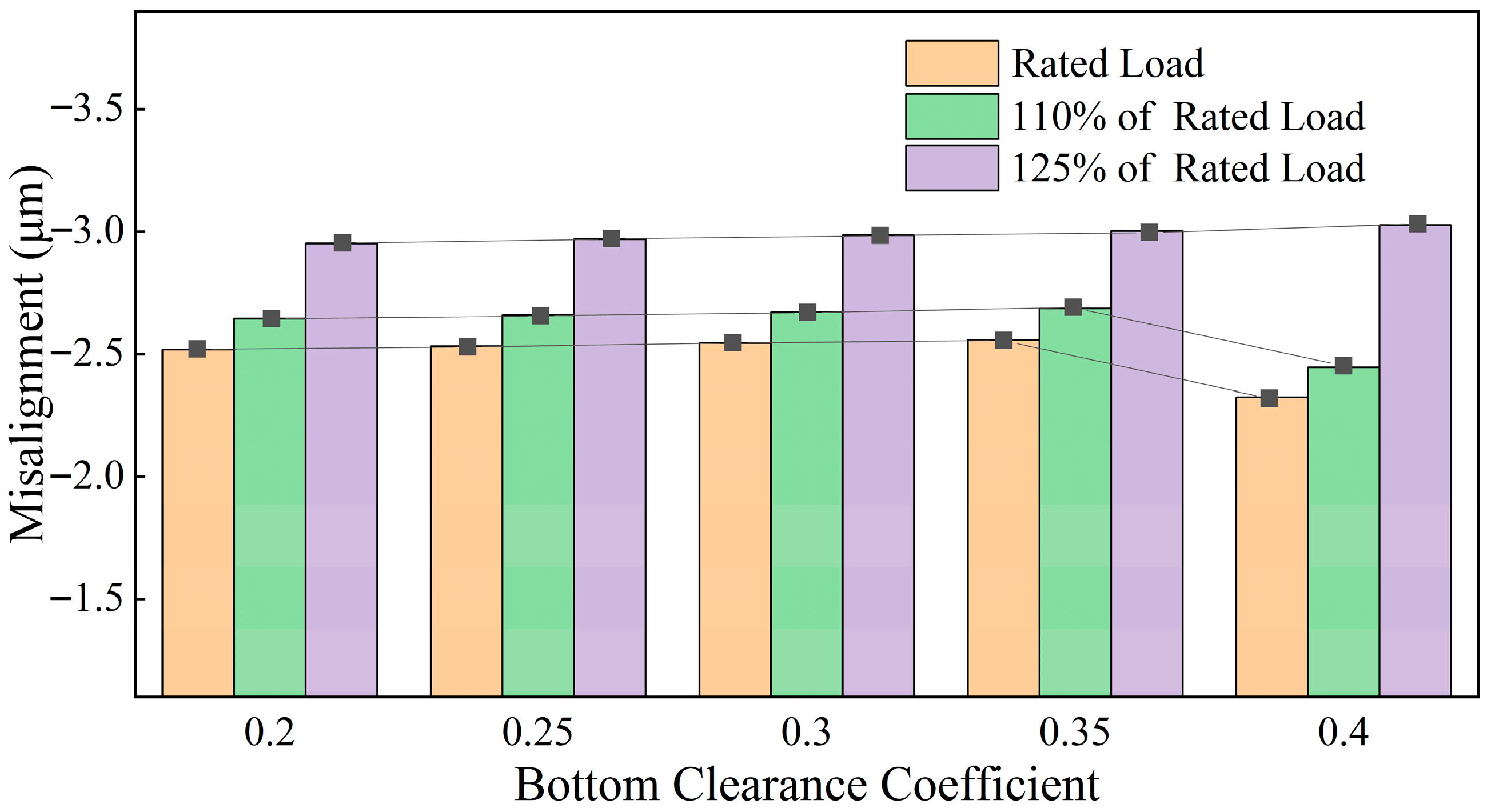








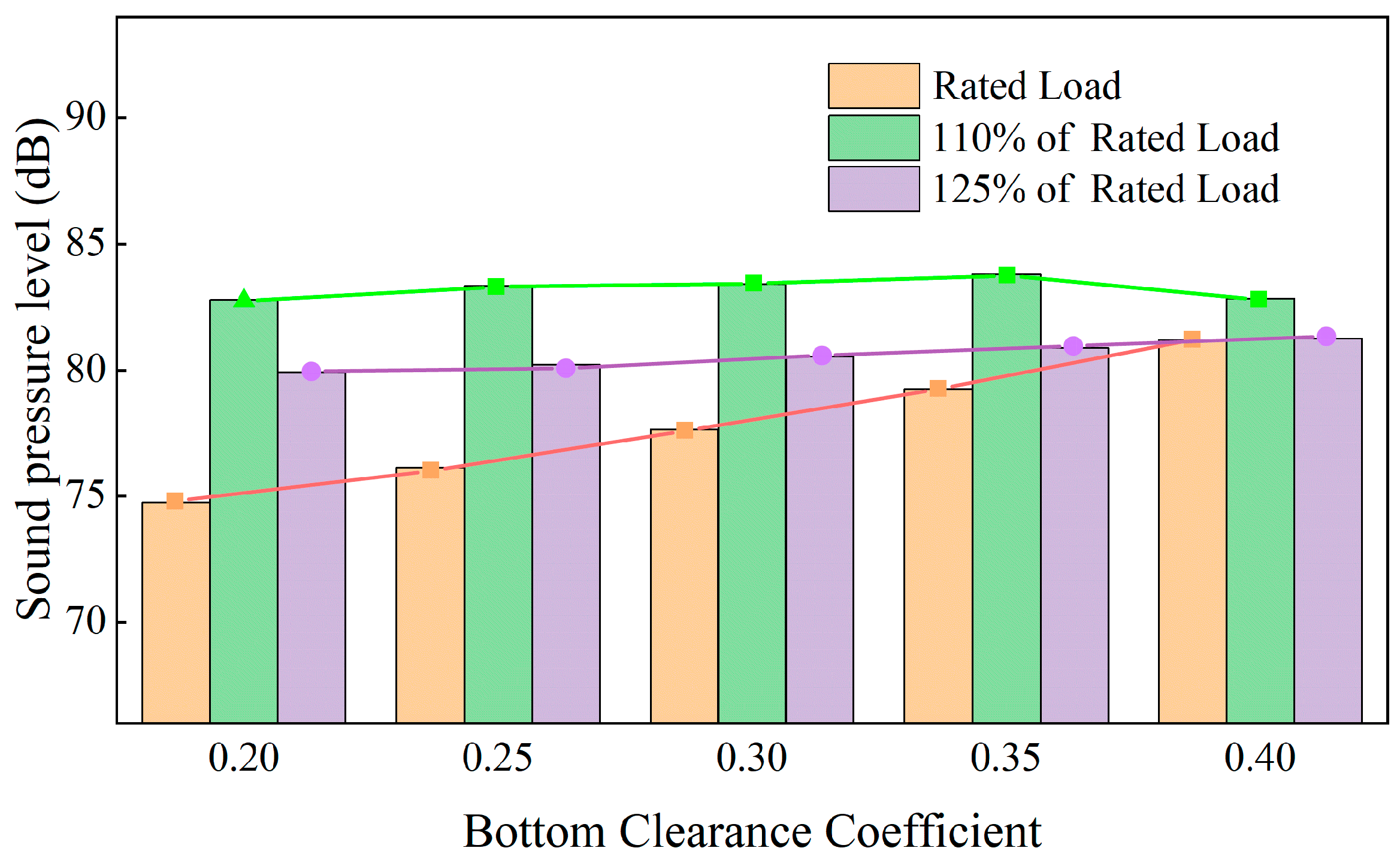

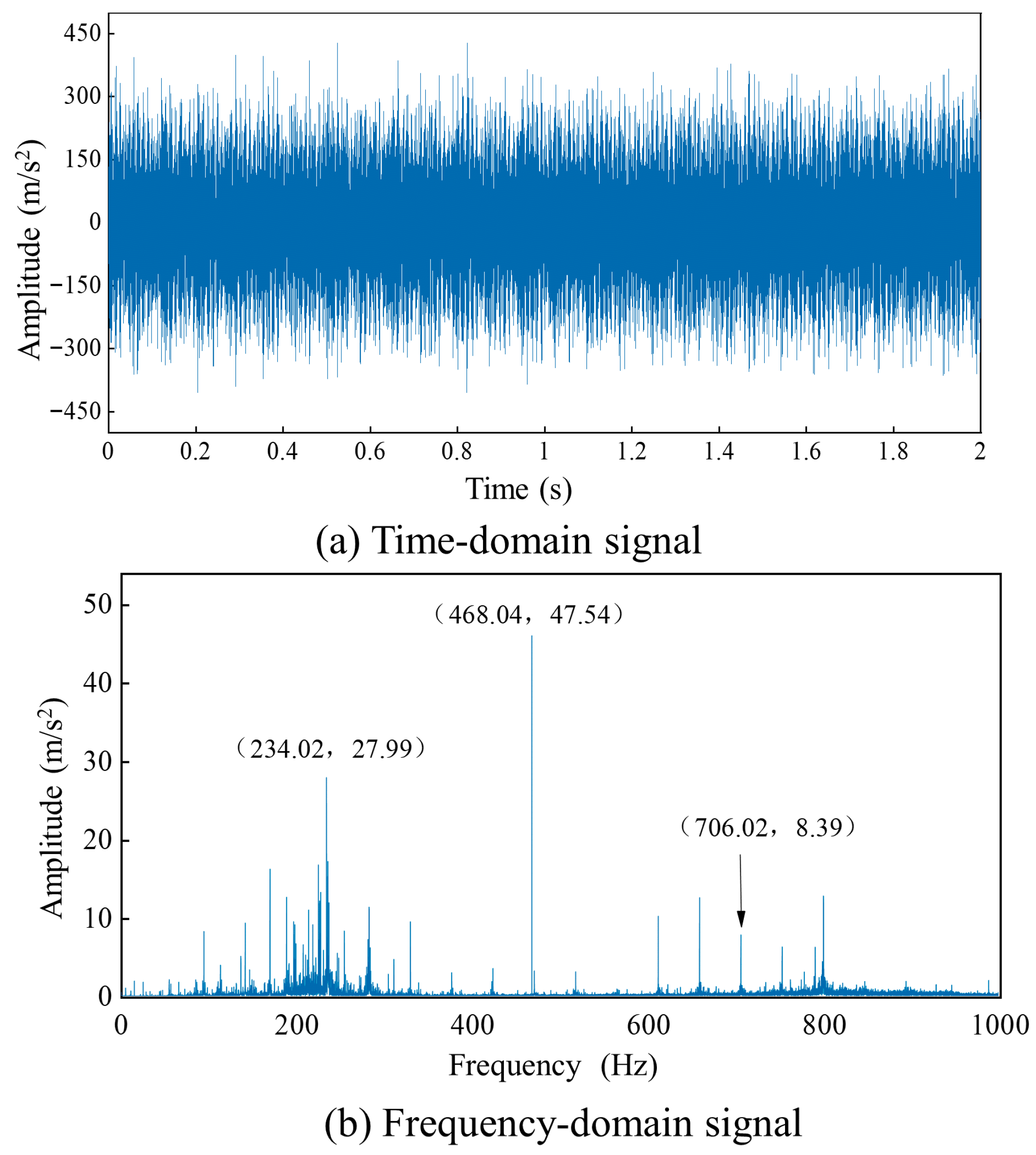

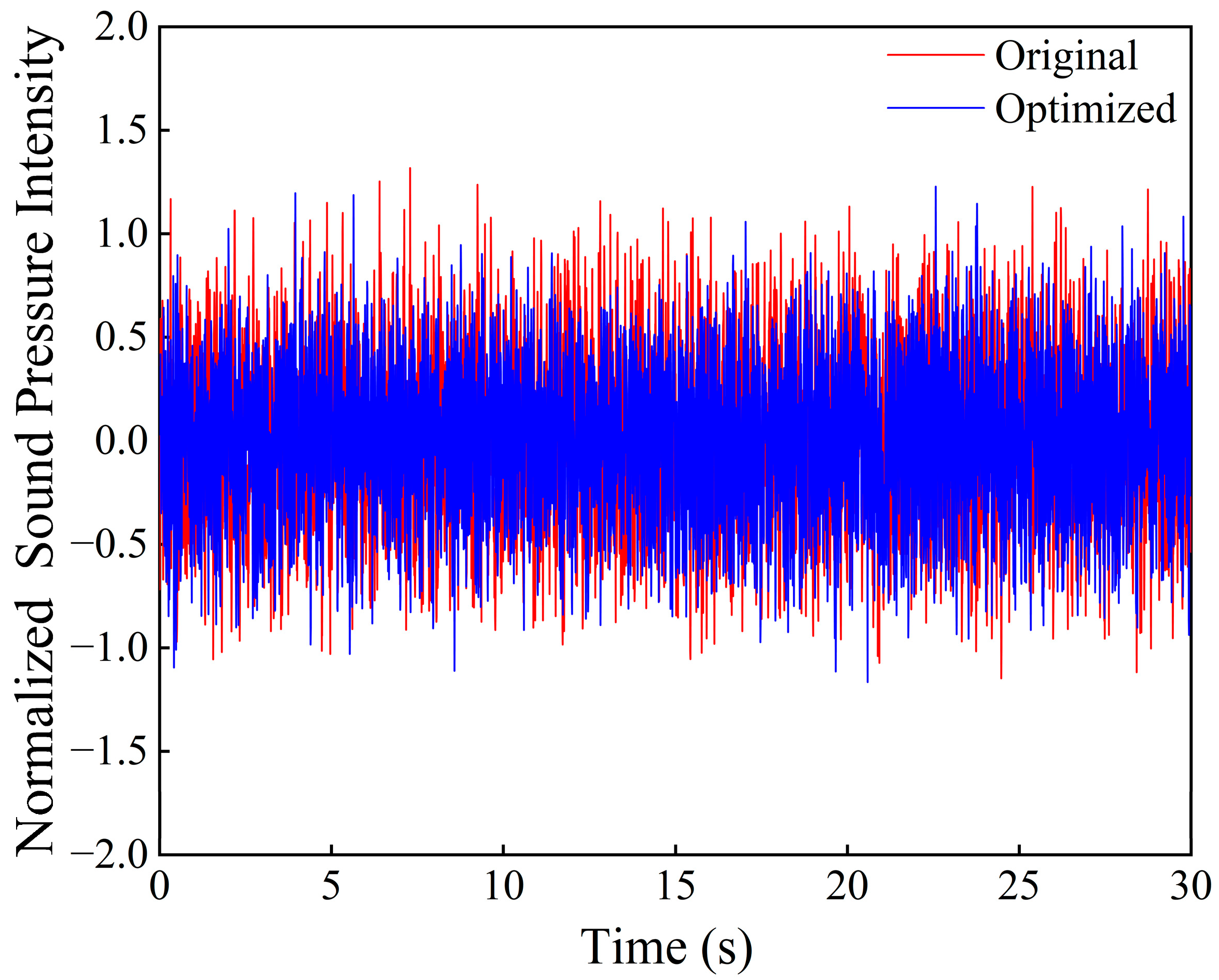
| Gear number | Z1 | Z2 | Z3 | Z4 | Z5 | Z6 | Z7 | Z8 | Z9 | Z10 | Z11 | Z12 |
| Number of gears | 1 | 1 | 1 | 1 | 1 | 1 | 1 | 1 | 1 | 1 | 4 | 1 |
| Modulus/mm | 9 | 9 | 12 | 9 | ||||||||
| Number of teeth | 19 | 36 | 31 | 21 | 44 | 17 | 33 | 33 | 34 | 16 | 25 | 68 |
| Gear ratio | 1.632 | 2.095 | 2 | 5.250 | ||||||||
| Gear shaft number | I | II | III | IV | V | VI | VII | |||||
| Rotational speed/(r/min) | 739 | 390.03 | 452.94 | 216.17 | 111.36 | 108.09 | 56.10 | 20.59 | ||||
| Rotational frequency/(Hz) | 12.32 | 6.500 | 7.549 | 3.602 | 1.856 | 1.802 | 0.935 | 0.343 | ||||
| Meshing Frequency/(Hz) | 234.02 | 158.53 | 61.25 | 13.89 | ||||||||
| Load Torque | Maximum Stress Reduction/MPa | Maximum Stress Reduction Ratio/% |
|---|---|---|
| 100% | 79.25 | 7.37 |
| 110% | 88.28 | 7.77 |
| 125% | 85.57 | 7.11 |
| Parameter Variable | Z1 Gear | Z2 Gear | Z3 Gear | Z4 Gear | Z5 Gear | |
|---|---|---|---|---|---|---|
| Before the improvement | Pressure Angle/° | 20 | 20 | 20 | 20 | 20 |
| Face Width/mm | 70 | 70 | 70 | 65 | 65 | |
| Bottom Clearance Coefficient | 0.35 | 0.35 | 0.35 | 0.35 | 0.35 | |
| Improved | Pressure Angle/° | 23 | 23 | 23 | 23 | 23 |
| Face Width/mm | 75 | 75 | 75 | 65 | 65 | |
| 0.4 | 0.4 | 0.4 | 0.4 | 0.4 |
Disclaimer/Publisher’s Note: The statements, opinions and data contained in all publications are solely those of the individual author(s) and contributor(s) and not of MDPI and/or the editor(s). MDPI and/or the editor(s) disclaim responsibility for any injury to people or property resulting from any ideas, methods, instructions or products referred to in the content. |
© 2025 by the authors. Licensee MDPI, Basel, Switzerland. This article is an open access article distributed under the terms and conditions of the Creative Commons Attribution (CC BY) license (https://creativecommons.org/licenses/by/4.0/).
Share and Cite
Huang, Q.; Xu, W.; Ma, Z.; Jiang, N.; Bu, Y.; Gao, K.; Zhang, X. Study on Dynamic Characteristics and Key Gear Parameter Selection of the Cutting Gear Transmission System of Bauxite Mining Machine Under Overload Conditions. Machines 2025, 13, 1052. https://doi.org/10.3390/machines13111052
Huang Q, Xu W, Ma Z, Jiang N, Bu Y, Gao K, Zhang X. Study on Dynamic Characteristics and Key Gear Parameter Selection of the Cutting Gear Transmission System of Bauxite Mining Machine Under Overload Conditions. Machines. 2025; 13(11):1052. https://doi.org/10.3390/machines13111052
Chicago/Turabian StyleHuang, Qiulai, Weipeng Xu, Ziyao Ma, Ning Jiang, Yu Bu, Kuidong Gao, and Xiaodi Zhang. 2025. "Study on Dynamic Characteristics and Key Gear Parameter Selection of the Cutting Gear Transmission System of Bauxite Mining Machine Under Overload Conditions" Machines 13, no. 11: 1052. https://doi.org/10.3390/machines13111052
APA StyleHuang, Q., Xu, W., Ma, Z., Jiang, N., Bu, Y., Gao, K., & Zhang, X. (2025). Study on Dynamic Characteristics and Key Gear Parameter Selection of the Cutting Gear Transmission System of Bauxite Mining Machine Under Overload Conditions. Machines, 13(11), 1052. https://doi.org/10.3390/machines13111052




